
Pope Clement V, born Raymond Bertrand de Got, was head of the Catholic Church and ruler of the Papal States from 5 June 1305 to his death. He is remembered for suppressing the order of the Knights Templar and allowing the execution of many of its members, and as the pope who moved the Papacy from Rome to Avignon, ushering in the period known as the Avignon Papacy.

Pope Clement VI, born Pierre Roger, was head of the Catholic Church from 7 May 1342 to his death in 1352. He was the fourth Avignon pope. Clement reigned during the first visitation of the Black Death (1348–1350), during which he granted remission of sins to all who died of the plague.

Pope Gregory XI was head of the Catholic Church from 30 December 1370 to his death in 1378. He was the seventh and last Avignon pope and the most recent French pope. In 1377, Gregory XI returned the Papal court to Rome, ending nearly 70 years of papal residency in Avignon, France. His death shortly after was followed by the Western Schism involving two Avignon-based antipopes.

Pope Urban VI, born Bartolomeo Prignano, was the Roman claimant to the headship of the Catholic Church from 8 April 1378 to his death. He was the most recent pope to be elected from outside the College of Cardinals. His pontificate began shortly after the end of the Avignon Papacy. It was marked by immense conflict between rival factions as part of the Western Schism, with much of Europe recognizing Clement VII, based in Avignon, as the true pope.
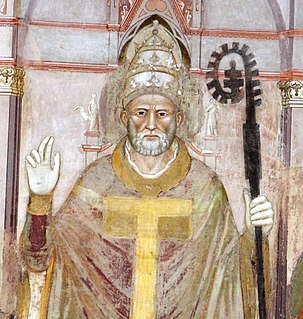
Pope Innocent VI, born Étienne Aubert, was head of the Catholic Church and ruler of the Papal States from 18 December 1352 to his death in 1362. He was the fifth Avignon pope and the only one with the pontifical name of "Innocent".

Pope John XXII, born Jacques Duèze, was head of the Catholic Church from 7 August 1316 to his death.
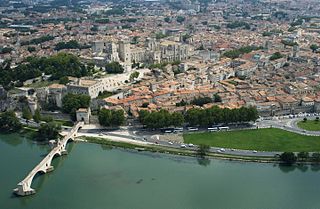
Avignon is a commune in South-Eastern France in the department of Vaucluse on the left bank of the Rhône river. Of the 90,194 inhabitants of the city, about 12,000 live in the ancient town centre enclosed by its medieval ramparts.

The Avignon Papacy, also known as the Babylonian Captivity, was the period from 1309 to 1376 during which seven successive popes resided in Avignon rather than in Rome. The situation arose from the conflict between the papacy and the French crown, culminating in the death of Pope Boniface VIII after his arrest and maltreatment by Philip IV of France. Following the further death of Pope Benedict XI, Philip forced a deadlocked conclave to elect the French Clement V as pope in 1305. Clement refused to move to Rome, and in 1309 he moved his court to the papal enclave at Avignon, where it remained for the next 67 years. This absence from Rome is sometimes referred to as the "Babylonian captivity of the Papacy".
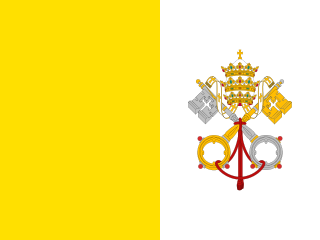
The Papal States, officially the State of the Church, were a series of territories in the Italian Peninsula under the direct sovereign rule of the pope, from the 8th century until 1870. They were among the major states of Italy from roughly the 8th century until the Kingdom of Piedmont-Sardinia successfully unified the Italian Peninsula by conquest in a campaign virtually concluded in 1861 and definitively in 1870. At their zenith, the Papal States covered most of the modern Italian regions of Lazio, Marche, Umbria and Romagna, and portions of Emilia. These holdings were considered to be a manifestation of the temporal power of the pope, as opposed to his ecclesiastical primacy.

The Western Schism, also called Papal Schism, Great Occidental Schism and Schism of 1378, was a split within the Catholic Church lasting from 1378 to 1417 in which two men simultaneously claimed to be the true pope, and each excommunicated one another. Driven by authoritative politics rather than any theological disagreement, the schism was ended by the Council of Constance (1414–1418). For a time these rival claims to the papal throne damaged the reputation of the office.
Conciliarism was a reform movement in the 14th-, 15th- and 16th-century Catholic Church which held that supreme authority in the Church resided with an Ecumenical council, apart from, or even against, the pope. The movement emerged in response to the Western Schism between rival popes in Rome and Avignon. The schism inspired the summoning of the Council of Pisa (1409), which failed to end the schism, and the Council of Constance (1414–1418), which succeeded and proclaimed its own superiority over the Pope. Conciliarism reached its apex with the Council of Basel (1431–1449), which ultimately fell apart. The eventual victor in the conflict was the institution of the Papacy, confirmed by the condemnation of conciliarism at the Fifth Lateran Council, 1512–17. The final gesture however, the doctrine of Papal Infallibility, was not promulgated until the First Vatican Council of 1870.

The Palais des Papes is a historical palace located in Avignon, Southern France. It is one of the largest and most important medieval Gothic buildings in Europe. Once a fortress and palace, the papal residence was the seat of Western Christianity during the 14th century. Six papal conclaves were held in the Palais, leading to the elections of Benedict XII in 1334, Clement VI in 1342, Innocent VI in 1352, Urban V in 1362, Gregory XI in 1370 and Benedict XIII in 1394.
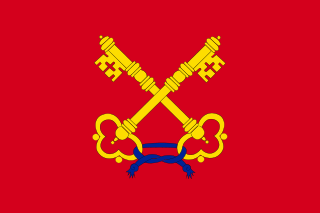
The Comtat Venaissin, often called the Comtat for short, was a part of the Papal States (1274‒1791) in what is now the Provence-Alpes-Côte d'Azur region of France.

Pedro Martínez de Luna y Pérez de Gotor, known as el Papa Luna in Spanish and Pope Luna in English, was an Aragonese nobleman, who as Benedict XIII, is considered an antipope by the Catholic Church.
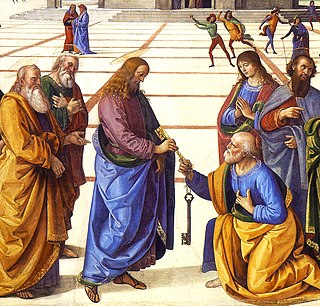
The history of the papacy, the office held by the pope as head of the Catholic Church, according to Catholic doctrine, spans from the time of Peter to the present day.

The papal conclave of 1352 convened after the death of Pope Clement VI, elected as his successor cardinal Etienne Aubert, who became the fifth Pope of the period of Avignon Papacy under the name Innocent VI. This conclave is remarkable because during its celebration Cardinals for the first time in history subscribed the electoral capitulation, which limited the power of elect.
Medieval Restorationism was a number of movements that sought to renew the Christian church during the Middle Ages. The failure of these movements helped create conditions that ultimately led to the Protestant Reformation.

The papal conclave of 1314–16, held in the apostolic palace of Carpentras and then the Dominican house in Lyon, was one of the longest conclaves in the history of the Roman Catholic Church and the first conclave of the Avignon Papacy. The length of the conclave was due to the division of the cardinals into three factions: Italian, Gascon, and French/Provençal.
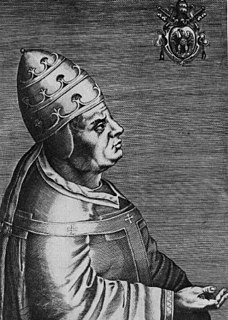
The papal conclave of 1378 which was held from April 7 to 9, 1378, was the papal conclave which was the immediate cause of the Western Schism in the Catholic Church. The conclave was one of the shortest in the history of the Catholic Church. The conclave was also the first since 1159 held in the Vatican and in Old St. Peter's Basilica.
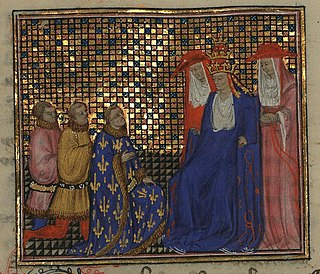
Robert of Geneva was elected to the papacy as Clement VII by the French cardinals who opposed Urban VI, and was the first antipope residing in Avignon, France. His election led to the Western Schism.

















